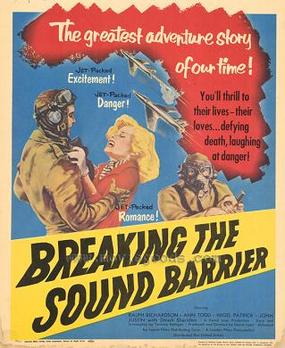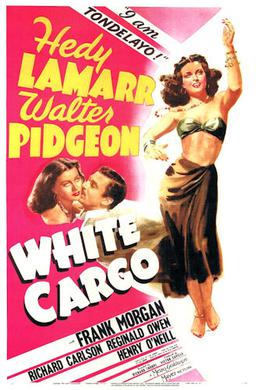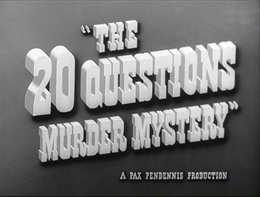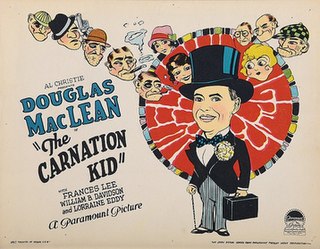
The Jazz Singer is a 1927 American part-talkie musical drama film directed by Alan Crosland and produced by Warner Bros. Pictures. It is the first feature-length motion picture with both synchronized recorded music and lip-synchronous singing and speech. Its release heralded the commercial ascendance of sound films and effectively marked the end of the silent film era with the Vitaphone sound-on-disc system, featuring six songs performed by Al Jolson. Based on the 1925 play of the same title by Samson Raphaelson, the plot was adapted from his short story "The Day of Atonement".

Earth, Wind & Fire is an American band whose music spans the genres of jazz, R&B, soul, funk, disco, pop, Latin, and Afro-pop. They are among the best-selling bands of all time, with sales of over 90 million records worldwide.

John Barry Prendergast was an English composer and conductor of film music. Born in York, Barry spent his early years working in cinemas owned by his father. During his national service with the British Army in Cyprus, Barry began performing as a musician after learning to play the trumpet. Upon completing his national service, he formed a band in 1957, the John Barry Seven. He later developed an interest in composing and arranging music, making his début for television in 1958. He came to the notice of the makers of the first James Bond film Dr. No, who were dissatisfied with a theme for James Bond given to them by Monty Norman. Noel Rogers, the head of music at United Artists, approached Barry. This started a successful association between Barry and the Bond series that lasted for 25 years.

The Singing Fool is a 1928 American sound part-talkie musical drama motion picture directed by Lloyd Bacon which was released by Warner Bros. In addition to sequences with audible dialogue or talking sequences, the film features a synchronized musical score and sound effects along with English intertitles. The soundtrack was recorded using the Vitaphone sound-on-disc system. The film stars Al Jolson and is a follow-up to his previous film, The Jazz Singer. It is credited with helping to cement the popularity of American films of both sound and the musical genre. The film entered the public domain on January 1, 2024.

The Sound Barrier is a 1952 British aviation drama film directed by David Lean. It is a fictional story about attempts by aircraft designers and test pilots to break the sound barrier. It was David Lean's third and final film with his wife Ann Todd, but it was his first for Alexander Korda's London Films, following the break-up of Cineguild. The Sound Barrier stars Ralph Richardson, Ann Todd, John Justin and Nigel Patrick. It was known in the United States as Breaking Through the Sound Barrier and Breaking the Sound Barrier.

Show Boat is a 1929 American pre-Code sound part-talkie romantic drama film based on the 1926 novel Show Boat by Edna Ferber. The film initially did not use the 1927 stage musical of the same name as a source, but scenes were later added into the film incorporating two of the songs from the musical as well as other songs. Many of these songs from the stage show were featured in a special prologue that was added to the picture before it was released. This film was produced and released by Universal. Like the majority of films during the early sound era, a silent version was made for movie theatres that had not yet converted to sound.

The Show of Shows is a 1929 American pre-Code musical revue film directed by John G. Adolfi and distributed by Warner Bros. The all-talking Vitaphone production cost almost $800,000 and was shot almost entirely in Technicolor.

Goldfinger is the soundtrack of the 1964 film of the same name, the third film in the James Bond film series, directed by Guy Hamilton. The album was composed by John Barry and distributed by EMI. Two versions were released initially, one in the United States and the United Kingdom, which varied in terms of length and which tracks were within the soundtrack. In 2003, Capitol-EMI records released a remastered version that contained all the tracks within the film.

White Cargo is a 1942 American drama film starring Hedy Lamarr and Walter Pidgeon, and directed by Richard Thorpe. Released by Metro-Goldwyn-Mayer, it is based on the 1923 London and Broadway hit play by Leon Gordon, which was in turn adapted from the 1912 novel Hell's Playground by Ida Vera Simonton. The play had already been made into a British part-talkie, also titled White Cargo, with Maurice Evans in 1930. The 1942 film, unlike the play, begins in what was then the present-day, before unfolding in flashback.

Adam and the Ants were an English rock band that formed in London in 1977. The band existed in two versions, both of which were fronted by Adam Ant, between 1977 and 1982. The first phase began when the band were founded in May 1977 and were called the Ants until November of that year. They later changed their style from punk rock to post-punk and new wave, and released one album. The final line-up of this version consisted of Dave Barbarossa, Matthew Ashman, and Leigh Gorman—all of whom left the band in January 1980 at the suggestion of manager Malcolm McLaren to form Bow Wow Wow.

The Twenty Questions Murder Mystery, also known as Murder on the Air, is a 1950 British second feature comedy crime film directed by Paul L. Stein and starring Robert Beatty, Rona Anderson, and Clifford Evans. The film is a hybrid: the Twenty Questions sections take place in a studio recording of the BBC radio programme with the regular panellists and presenter. This is threaded into the plot as the clues trigger a series of murders, each linked to the clue.
Master and Man is a 1929 British drama film directed by George A. Cooper and starring Anne Grey, Henri De Vries and Olaf Hytten. Due to the public's apathy towards silent films, a sound version was also produced in 1929. While the sound version has no audible dialog, it features a synchronized musical score with sound effects along with a theme song. The film was based on the play Master and Man by George Robert Sims and Henry Pettitt. It was made at Isleworth Studios.
The Ringer is a 1928 British silent crime film directed by Arthur Maude starring Leslie Faber, Annette Benson and Hayford Hobbs. It was based on the 1925 Edgar Wallace novel The Gaunt Stranger. Scotland Yard hunt for a dangerous criminal who has returned to Britain after many years away. A talkie version of The Ringer followed in 1931.
Cupid in Clover is a 1929 British sound romance film directed by Frank Miller and starring George Wynn, Winifred Evans and Herbert Langley. While the film has no audible dialog, it features a synchronized musical score with sound effects along with a theme song. The film was adapted from the novel Yellow Corn by Upton Gray and made at Isleworth Studios in London.
The Burgomaster of Stilemonde is a 1929 British sound drama film. While the film has no audible dialog, it was released with a synchronized musical score with sound effects using both the sound-on-disc and sound-on-film process. The film was directed by George Banfield and starring John Martin Harvey, Fern Andra and Robert Andrews. It was made at Walthamstow Studios and on location in Belgium. It was based on the 1918 play Le Bourgmestre de Stilmonde by Maurice Maeterlinck. Like the play, it portrays German atrocities during the First World War occupation of Belgium. It was well received by critics.

Wonder of Women is a 1929 American sound part-talkie pre-Code drama film directed by Clarence Brown and starring Lewis Stone, Leila Hyams, and Peggy Wood. While the film has a few talking sequences, the majority of the film features a synchronized musical score with sound effects using both the sound-on-disc and sound-on-film process. It was nominated for Best Writing at the 2nd Academy Awards.
This is a summary of 1932 in music in the United Kingdom.

The Carnation Kid is a 1929 American sound part-talkie drama film directed by E. Mason Hopper and Leslie Pearce and written by Alfred A. Cohn, Arthur Huffsmith and Henry McCarty. In addition to sequences with audible dialogue or talking sequences, the film features a synchronized musical score and sound effects along with English intertitles. The soundtrack was recorded using the Western Electric sound-on-film system. The film stars Douglas MacLean, Frances Lee, William B. Davidson, Lorraine MacLean, Charles Hill Mailes, and Francis McDonald. The film was released on March 2, 1929, by Paramount Pictures.

The Spieler is a 1928 American sound part-talkie drama film directed by Tay Garnett and starring Alan Hale, Clyde Cook and Renée Adorée. While the film had a few sequences with audible dialog, the majority of the film featured a synchronized musical score with sound effects using both the sound-on-disc and sound-on-film process. The film's sets were designed by the art director Edward C. Jewell.
Paul Beeson, B.S.C. was a British cinematographer. He was initially at Ealing Studios before going on to work on films for various other companies. He worked on over three hundred feature films, including 74 where he was director of photography.














